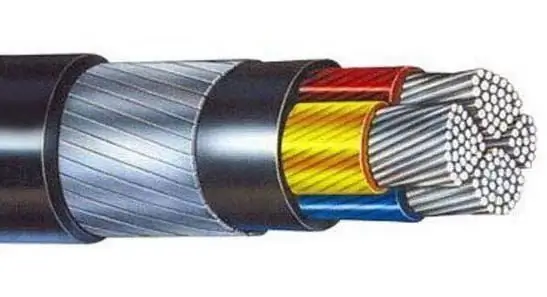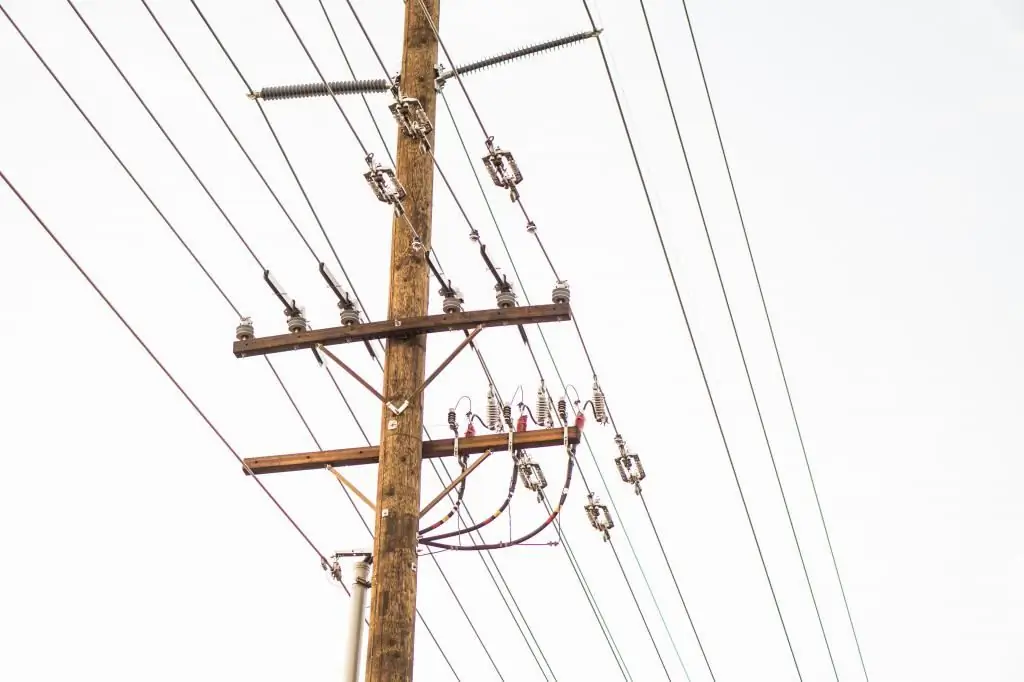2026 Author: Howard Calhoun | [email protected]. Last modified: 2025-01-24 13:10:35
The cable crane itself consists of two large towers, between which a rope is attached. This rope plays a supporting role in this design. A trolley moves along it, to which a gripping mechanism in the form of a hook or grab is attached.
General description of the installation
If we talk about the general design of cable cranes, it is very simple. As a result, they are considered very reliable. Such equipment is most widely used on construction sites. Most often used during the construction of dams, bridges and locks. Among the main structural elements are the following parts:
- Undercarriage. It has support rollers. The grooves of these devices fit the diameter of the crane rope.
- The cable crane has a trolley to lift the load. It is necessary in order to lift loads in a vertical direction.
- There is a traction winch. The main purpose is to move the undercarriage.
- A hook or grab is used as a gripping mechanism.
As for modern models, they most often also have a cabin. From herthe operator can operate this unit. Most often, such a cabin at a cable drum crane is located approximately at a height of 20 to 25 meters. The height is calculated from the bottom reference points of the installation. Although it is important to note here that, in addition to control from the cab, such a device can also be controlled remotely. Most often, this control method is used when visibility is poor at the construction site.

Crane classification
Cable cranes are divided into two main types according to their mobility.
The first type is fixed installations. The supporting elements of the towers in this case do not move, since they are installed on the foundation. In this case, all operations for the movement of goods should be carried out only under the rope of the device. As for the second type, movable, the supporting element of both towers or one can move along the paths that are arranged in advance. Thus, it is possible to significantly expand the working area of the device.

Types of fixed cranes
Fixed type overhead cable cranes can be divided into several more classes.
- The simplest type is stationary. In this case, the supporting elements of both towers are fixed most rigidly. In this case, the carrier rope will maintain a constant position and will not move anywhere during the movement of the trolley. Thus, the working area is very narrow.
- The next variety is towers with deviatingmasts. In this case, the supports can swing transversely. And the rope is able to move under the action of the trolley by about 6 degrees. This helps to increase the working range of the crane.
- Side pull valve. In this case, the swing angle of the mast can be increased to 8-12 degrees, which further increases the working area. The support towers in this case are installed on the foundation, and in addition, they have winches and chain hoists on both sides. By pulling or releasing the chain hoists, the angle changes.
- The last type of towers are slipways. In this case, we mean the connection of several cranes on a common support, but at the same time with separate elements (drives and trolleys). You can operate them separately. The working area of this type of fixed crane is the widest.

Mobile devices
As for the mobile types of cranes, they are divided into 3 categories:
- The first kind is called parallel. In this case, both support towers move synchronously, along pre-laid paths. The latter can only be straight lines. Thus, a working area of a rectangular type is obtained.
- The second variety is radial installations. In this case, one tower is completely stationary, and one or several others can move around it along the ring tracks. In this case, the working area will look like a sector.
- The last kind is the circular type. In this option, both towers will move along circular paths.

Hardware Specifications
Among the main characteristics of cable cranes are the following: lifting capacity, working speed and height. It is worth noting that the height of the tower is considered separately, as well as the height to which the load can be lifted.
As for the lifting capacity, then, of course, it varies within certain limits, which depend on the type of crane model. With regard to the limit values, the minimum weight is three tons, and the maximum is twenty-five tons. However, it should be added that some special models can lift loads weighing up to 150 tons. The most common rope span is six meters. In some cases, this value can reach up to 1 km. As for the height of the cable crane tower itself, it can reach 70 meters. As for the lifting speed, on average it is 2.5 m/s. Cargo cable equipment can move cargo at speeds up to 6 m/s.

Testing cranes of this type
Before putting into operation, and also after certain intervals, it is necessary to carry out static tests of the cable crane. To successfully carry out this procedure, it is necessary to install the bogie in the position that will correspond to the greatest deflection of the bridges. For testing, it is necessary to use a load whose weight will exceed the maximum load according to the passport by 25%. The duration of static testing of cable cranes is 10 minutes.
Recommended:
Aluminum cable: description, types, characteristics

Currently, people are very actively using wires, cables, etc. The main purpose of these elements has become the transmission of electricity. In everyday life, aluminum cables are the most common type of steel
Loading cranes: types and operating rules

Many years ago, lifting equipment was one of the main achievements of technology. But today, when advanced technologies and modern materials are being actively introduced, it is gradually becoming more traditional
Installation of the cable line. Methods for laying cable lines

The article is devoted to the installation of cable lines. The most common ways of laying such lines are considered
Cable manufacturers: types of cable, list of manufacturers, rating of the best, product quality, addresses and customer reviews

Cable is such a demanded product that it is manufactured in any state. Wires are found in rooms, the ground, industrial facilities and even air. If a country is not able to guarantee itself a similar product, it is worthless. The article deals with domestic cable manufacturers
Two-component polyurethane sealant: definition, creation, types and types, characteristics, properties and nuances of application

With long-term and high-quality sealing of seams and cracks, polyurethane two-component sealants have found their wide distribution. They have high deformation and elastic properties, therefore, they can be used as butt sealants in the field of repair and housing construction

